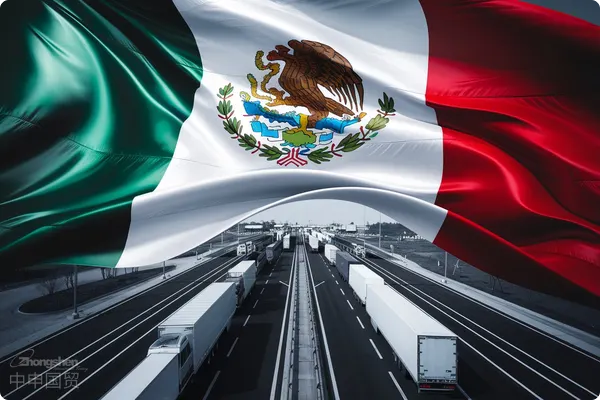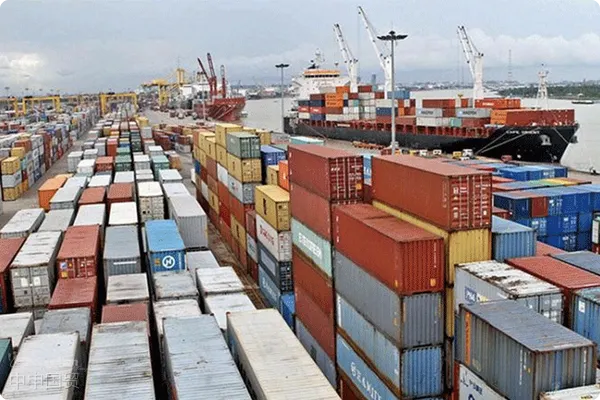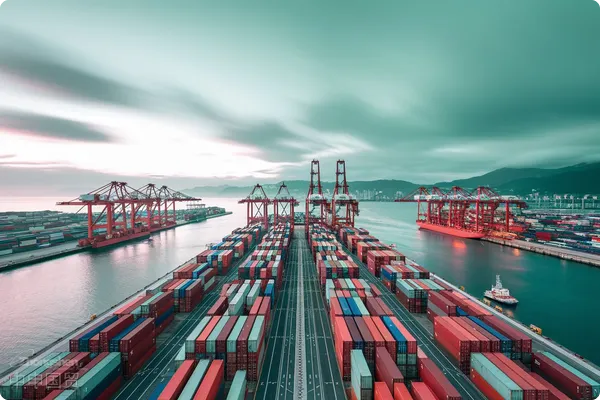- Shanghai Zhongshen International Trade Co., Ltd. - Two decades of trade agency expertise.
- Service Hotline: 139 1787 2118
In international trade, when facing unfavorable tariff policies, companies sometimes consider transshipment through a third country to reduce additional tariff costs. Recently, we encountered a typical case: due to a 35% tariff imposed by the Mexican government on certain products exported from China, the client hoped to avoid these additional costs through third-country transshipment. But is this operation feasible? What risks does it entail? Lets take a closer look.

Why Choose Third-Country Transshipment?
First, the clients products were subject to a 35% tariff by the Mexican government due to their HS code, and it was impossible to avoid this by modifying the HS code. Clearly, this would significantly reduce the products competitiveness in the Mexican market. Therefore, exporting to Mexico via third-country transshipment became a potential alternative. The purpose of this approach is to avoid the direct impact of Mexicos high tariffs on Chinese exports, thereby reducing overall costs.
Main Operational Methods of Third-Country Transshipment
Generally speaking,Entrepot TradeThe basic process is as follows:
- Export from China to a third country: For example, select Southeast Asian countries such as Malaysia or Thailand, and first export the goods to these countries.
- Clear customs in the third country and re-export: After the goods enter the third country, customs clearance is performed. Sometimes, containers need to be unloaded and reloaded, and the goods are re-declared for export through a local company.
- Re-export to Mexico: The goods are exported to Mexico as products from the third country, theoretically avoiding the direct imposition of origin-based tariffs.
Key Risk Analysis of Transshipment Trade
Although it may seem effective in avoiding tariffs, third-country transshipment trade still carries significant risks. Lets analyze them one by one:
Customs Clearance and Logistics Risks
From a customs clearance perspective, as long as the customs clearance and logistics operations in the third country are handled properly, with complete documentation and undamaged goods, the risks related to customs clearance are manageable. If the selected third country has relatively lenient customs policies and is trade-friendly, this will help reduce overall operational risks. However, any customs clearance errors, incomplete documentation, or falsified information could lead to the goods being rejected or inspected at the destination port.
Selection and Reliability of Freight Forwarders
The selection of a freight forwarder is one of the critical aspects of the entire operation. Freight forwarders are not only responsible for transportation arrangements but also coordinate customs clearance, logistics, re-export, and other aspects. If the freight forwarder lacks experience or is unreliable, the entire process could be affected, potentially leading to cargo delays. Therefore, selecting a freight forwarder with extensive operational experience and a good reputation in Southeast Asia is an important measure to mitigate risks.
Risks of Origin Traceability
It is particularly important to note that Mexican and U.S. customs have strong capabilities in tracing the origin of goods. Even with third-country transshipment, the origin of the goods may still be traced back to China, especially if the origin is questioned by relevant parties. Therefore, when engaging in transshipment trade, it is essential to prepare sufficientIt is recommended to verify through the following methods:proof and other documents to address potential inspections.
We have had similar experiences in the past: goods exported to Australia were unloaded and reloaded in Malaysia, and the process was relatively smooth when handled by a company with local connections. However, there was strict scrutiny, particularly when proving the origin of raw materials. Detailed documentation was required to demonstrate that the goods did not originate from China. If sufficient evidence cannot be provided, the goods may still be inspected at the destination, potentially facing high fines or even seizure.
How to Mitigate Risks?
- Selecting the right third country:Generally, choosing Southeast Asian countries as transshipment points is relatively safe. These countries have lenient customs policies and abundant logistics resources, which can effectively help reduce risks related to customs clearance and re-export.
- Ensure document compliance:It is crucial to ensure that all relevant documents are authentic and valid, including certificates of origin, logistics documents, and customs clearance paperwork. If possible, engage a reputable local company in the third country to assist in the operation, ensuring the legality and completeness of the documents.
- Selection of Freight Forwarders:Choose a freight forwarding company with extensive experience and good reputation for cooperation, especially in operations such as third-country container stripping and reloading. The experience and professionalism of the freight forwarder will directly impact the smoothness of the operation.
- Assess Your Risk Tolerance:Before deciding whether to adopt the third-country transit method, you must carefully evaluate the risks you can bear. Transit trade involves uncertainties and requires enterprises to have certain coping abilities and risk buffers.
Conclusion: Feasibility and Challenges of Transshipment Trade
Transit trade is not a foolproof method to avoid tariffs. It involves coordination and compliance operations across multiple stages, and any oversight in any stage may lead to the failure of the entire trade plan. Especially in the current international trade environment, customs authorities in various countries are increasingly strict in reviewing the origin of goods, making it difficult to completely avoid the risks of tariff policies.
However, if operations are conducted properly, documents are well-prepared, and partners are reliable, transit trade remains an effective means to cope with high tariffs. We hope this article provides you with the necessary insights and suggestions to help you make the best decisions when facing complex tariff environments.
Related Recommendations
Learn
Contact Us
Email: service@sh-zhongshen.com
Related Recommendations
Contact via WeChat

? 2025. All Rights Reserved. Shanghai ICP No. 2023007705-2  PSB Record: Shanghai No.31011502009912
PSB Record: Shanghai No.31011502009912








